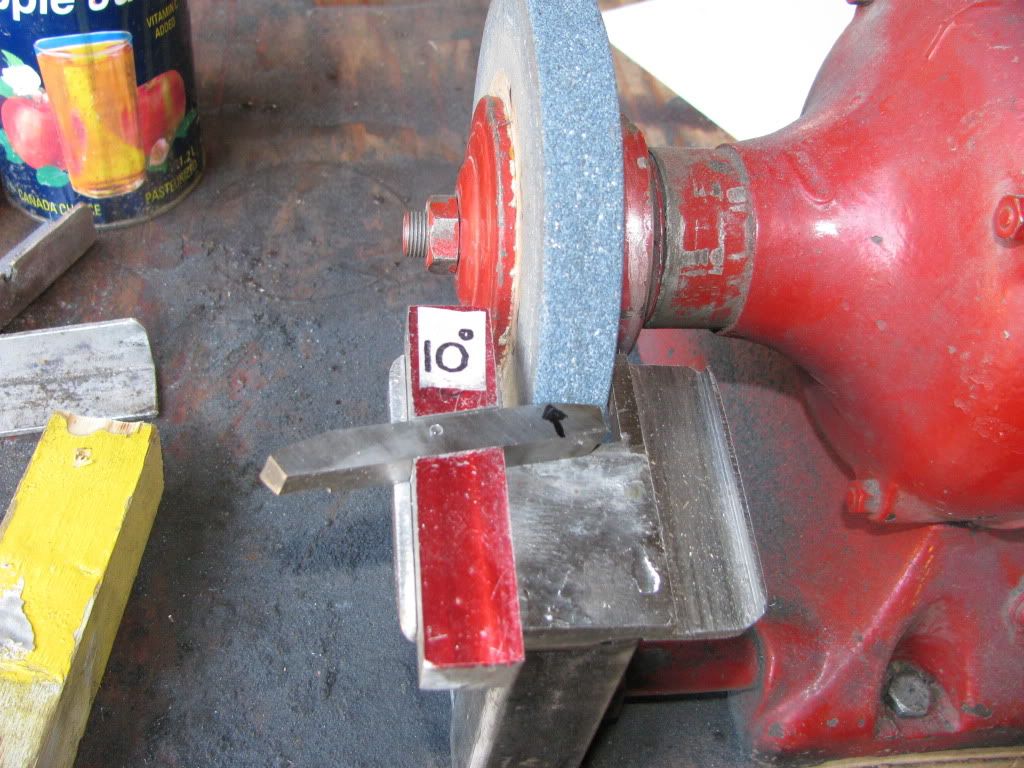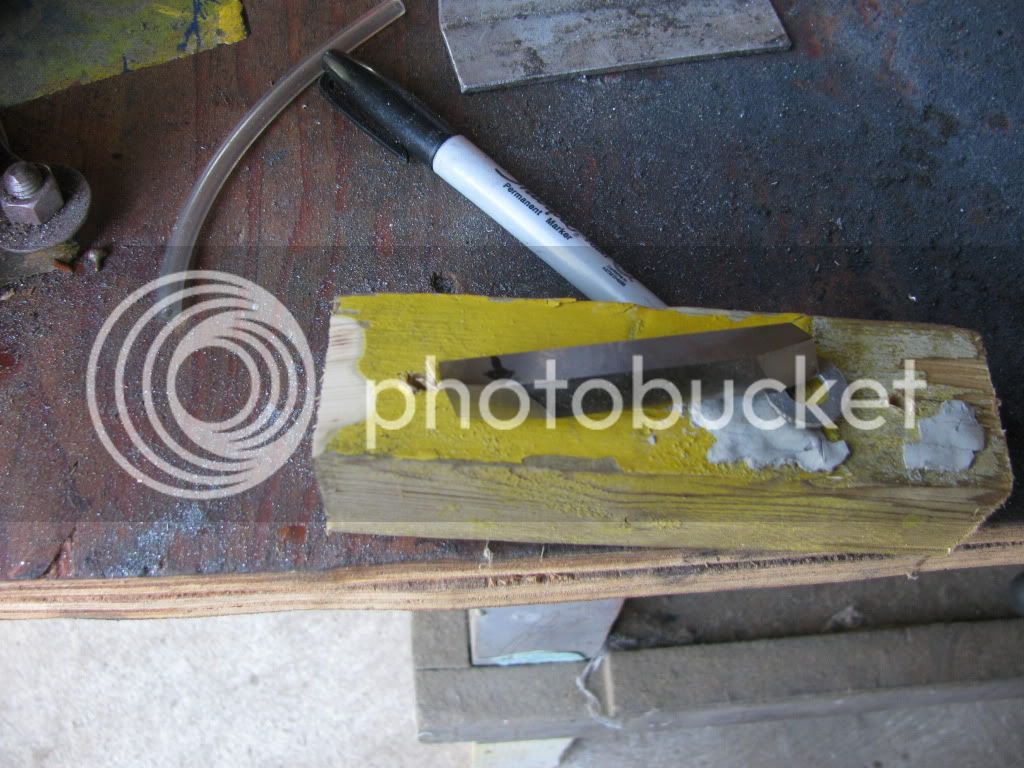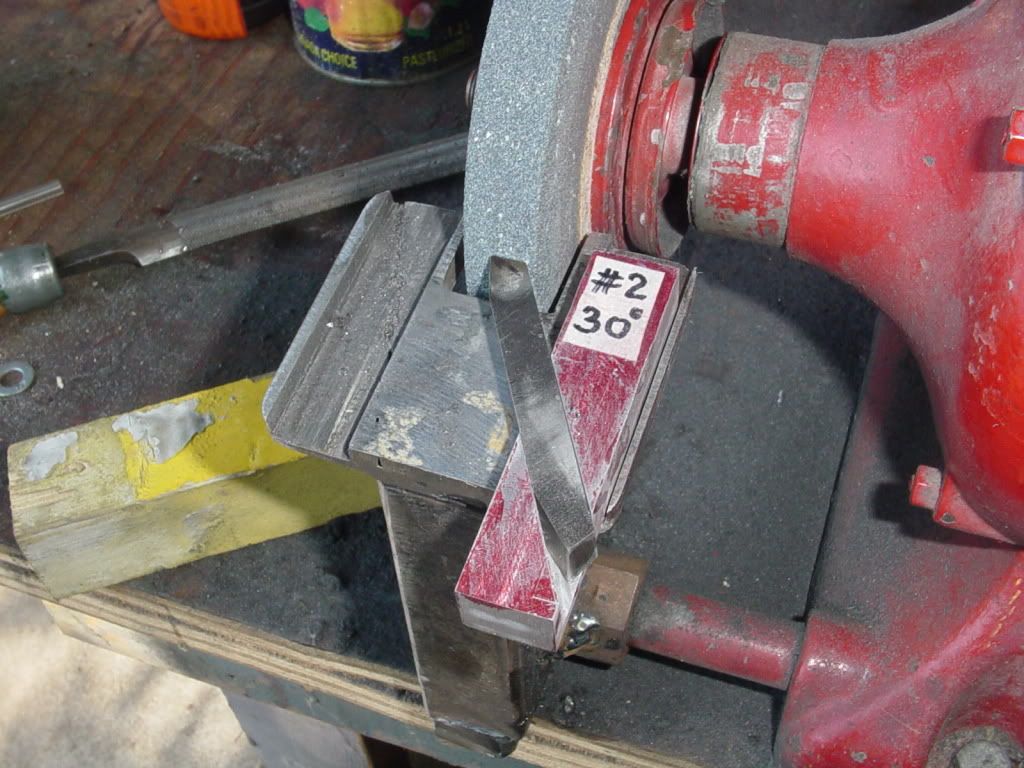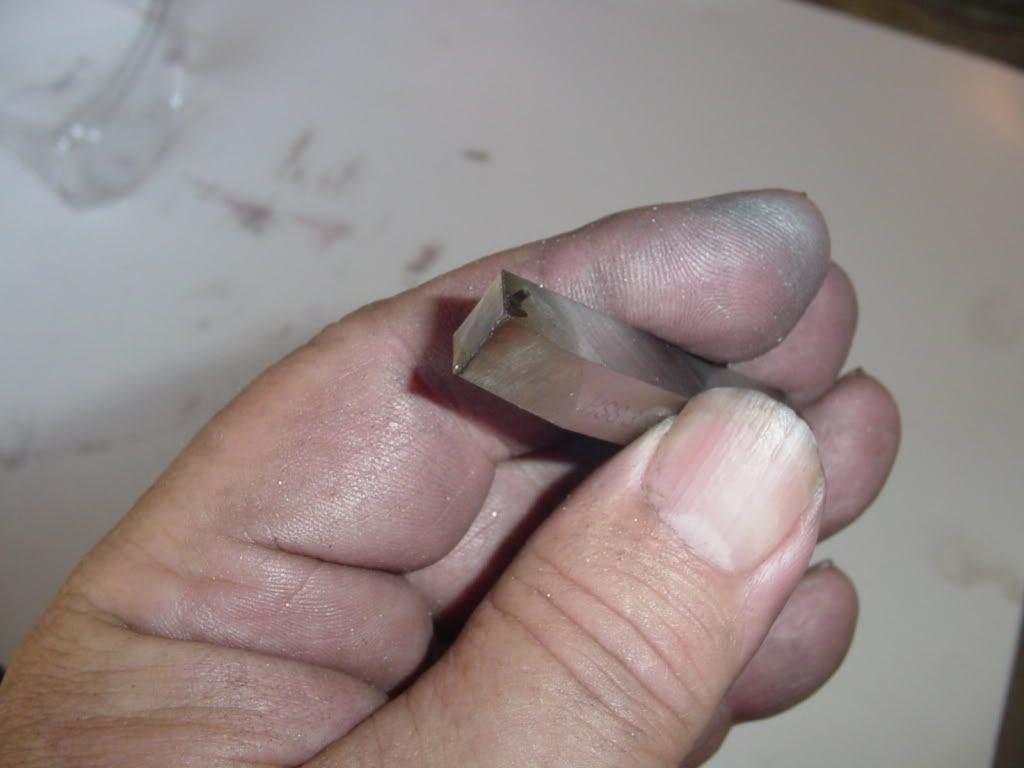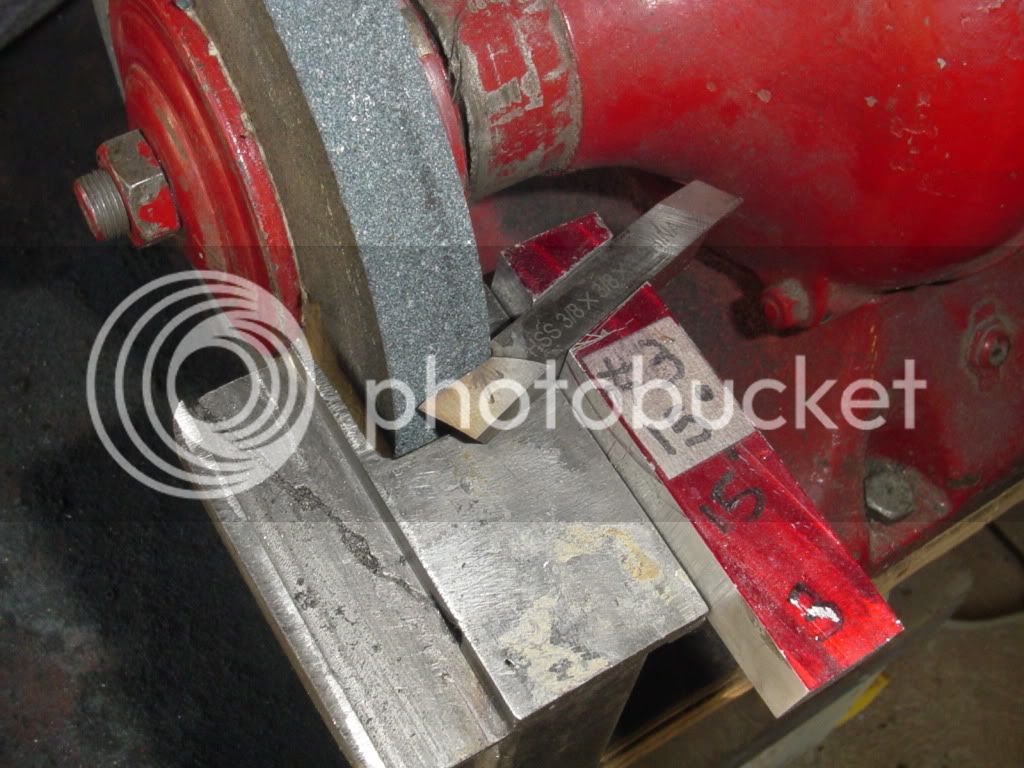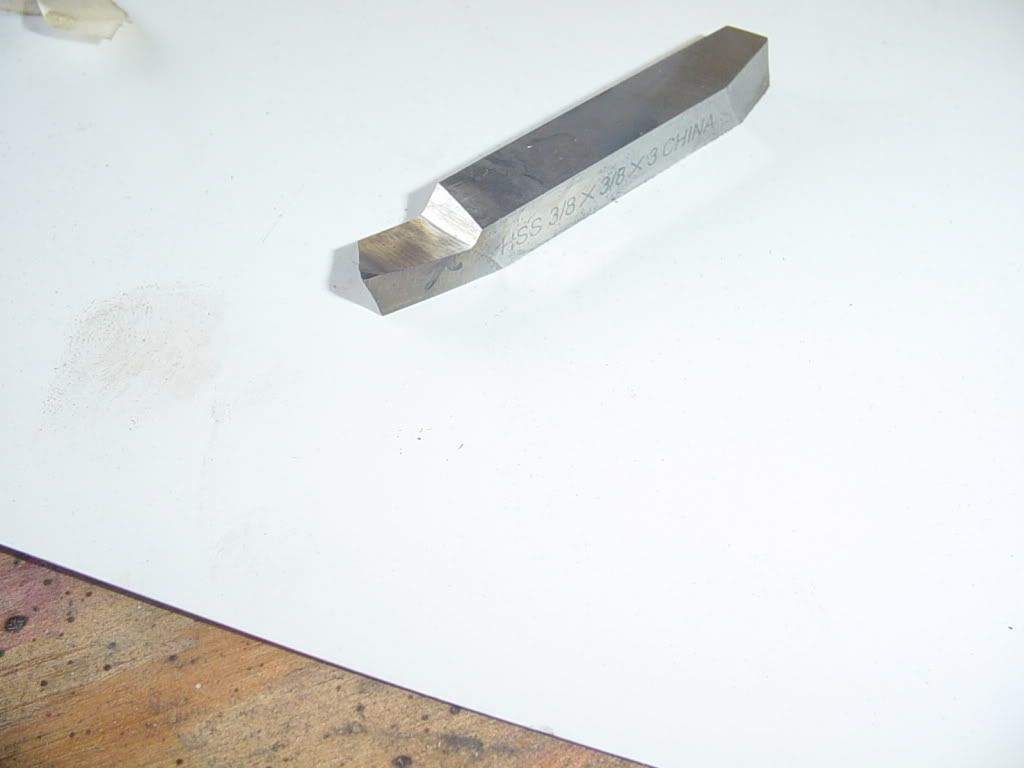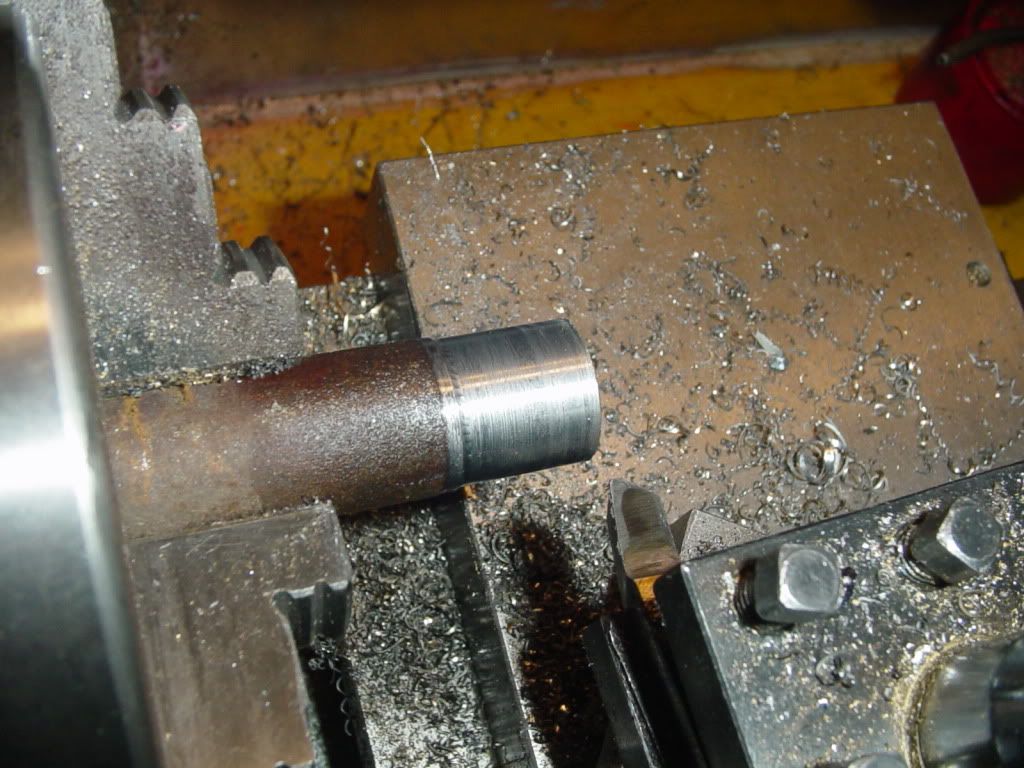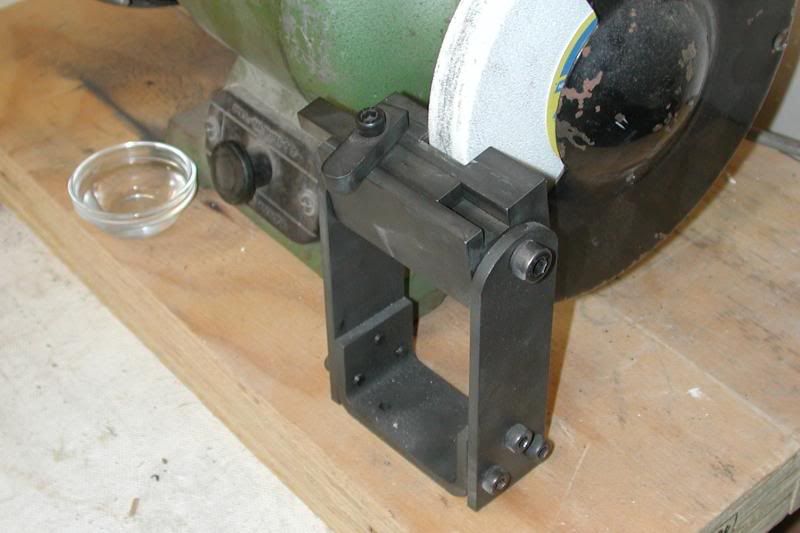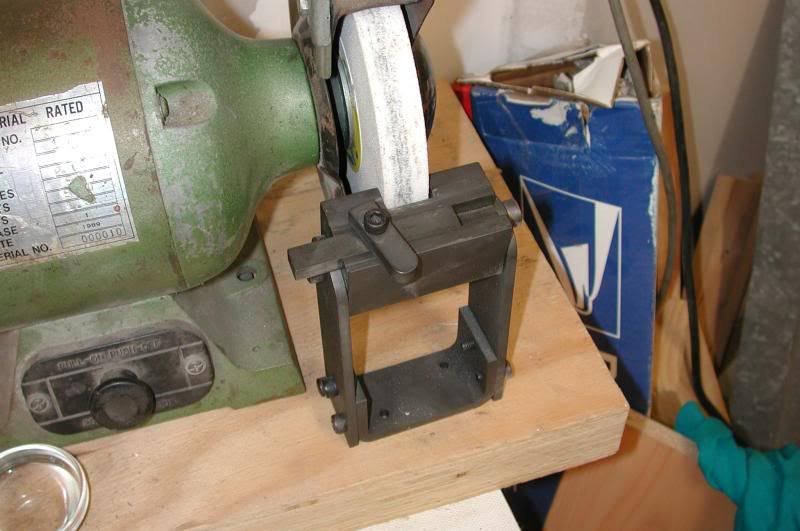Here you see it after the first grind is completed. The grind ends at the mark 1/2" back from the end of the tool. It is really easy to use, and as I slide the tool back and forth on the face of the grinding wheel, the Slider moves ahead and back in the jig slot, holding the angle correctly.
